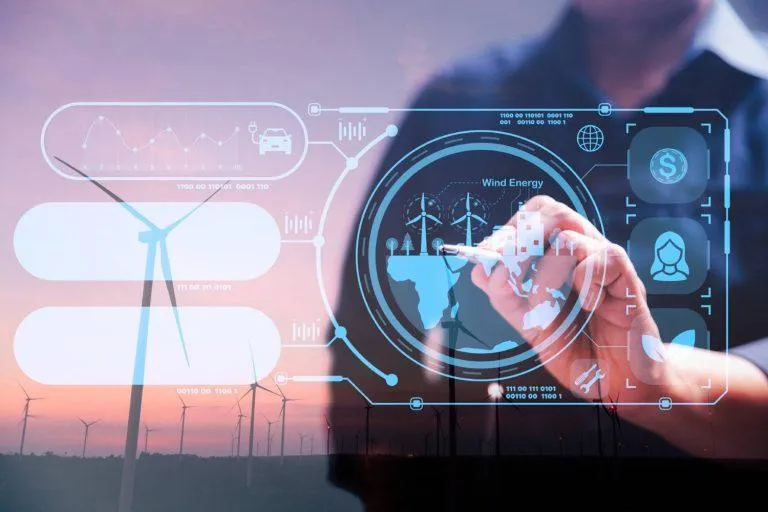
Why Energy Tech Fails — And What to Do About It
Last week, I explored the idea of technology as a friend or foe. The message clearly resonated — I had some great conversations, many of which came back to one common thread:
“We’ve got the tech. We’ve made the investment. So why aren’t we seeing the results?”
This week, I want to dig deeper into that exact question. Because the truth is — most energy tech doesn’t fail because it’s bad. It fails because it’s misunderstood, underused, or misaligned with business goals.
So here are the top five reasons, plus a little bonus one for why energy technology underdelivers — and what you can do about it.
1. There’s No Internal Owner
You’d be amazed how many buildings have a BMS, solar dashboard, or EV chargers — but no one actively managing them. When “tech” isn’t someone’s job, it quickly becomes no one’s job.
Fix: Assign clear ownership. Every system needs a named person responsible for performance, reporting, and outcomes. They don’t need to be the technical expert — just someone who’s accountable and curious. Without this, the tech becomes background noise.
2. It’s Not Tied to Clear Outcomes
You’ve installed smart lighting, sensors, or HVAC controls. Great. But what does success actually look like? If the goal was simply “installation complete,” don’t be surprised when nothing changes.
Fix: Define success early. Set specific KPIs — a 15% drop in peak demand, a 10% cut in heating costs, etc. Then track them monthly. When I worked in retail, we were KPI’d to the hilt — and for good reason: what gets measured, gets improved.
3. It’s Too Complicated
I’ve seen plant rooms with five glowing screens and live data feeds across multiple zones. Impressive — until the facilities manager shrugs and says, “No idea what any of that means.”
Fix: Simplify. If people on site can’t interpret the data, it’s not helping. Choose systems that translate it into plain-English actions, ideally with visual cues or automated prompts. Smart doesn’t mean complex — it means useful.
4. The Team Hasn’t Been Trained
Even the best tech fails without the right people behind it. Often, one person gets trained during install — and when they leave, the knowledge leaves with them. Or, well-meaning staff bypass the system because they don’t trust what they don’t understand.
Fix: Train — and retrain. Include refresher sessions in your annual plan. Add practical tech training to your onboarding process. If your people can’t use it, it won’t deliver.
Quick note: If you've moved into a building with an existing system that isn’t working, call the company who installed it. You wouldn’t ignore a broken heating system at home. Many energy systems cost thousands — and a relatively low-cost call-out and update can pay dividends.
5. It Generates Data, Not Decisions
Most energy tech delivers data. But if it doesn’t lead to action, it won’t lead to savings. Charts and kilowatt readings are only valuable if someone understands and uses them.
Fix: Turn data into routine decisions. Build energy reviews into monthly meetings. Link insights to business outcomes like energy costs, carbon targets, or compliance. If it’s not influencing decisions, it’s not working hard enough.
6. Bonus: It’s Not C.L.E.A.R.
Even with the right kit, tech fails when no one is clear on what it’s for.
It’s a theme I explored in The C.L.E.A.R. Method — a five-step model I use to deliver real energy results:
Collect real data
Locate inefficiencies
Establish a goal
Act with a phased plan
Review and improve
If your energy tech doesn’t follow those five steps — if it’s not part of a strategy — it becomes just another shiny object on the wall.
Fix: Ask:
Is this tech part of a plan?
Are we measuring outcomes?
Does someone own it?
If the answer is no — don’t ditch the tech. Get C.L.E.A.R. about how you use it.
What Can You Do About It?
Here’s my advice:
Audit what you’ve got. What’s installed? Who owns it? What’s working — and what’s gathering dust?
Focus on outcomes. Ask: “Is this saving us money or cutting carbon?” If not, there’s a gap.
Simplify and integrate. Bring systems together, reduce manual steps, and ensure there’s a process behind the platform.
Make data meaningful. Use it in reporting, budgeting, and decision-making.
Back your people. Your team is either your biggest asset or your biggest gap. Train them well.
Tech That Does Deliver (When It’s Done Right)
If you’re considering new energy tech, here are three areas delivering strong ROI — when implemented with a clear strategy:
Submetering + Behavioural Nudges
Target high-use areas and pair insights with simple nudges — like weekly usage summaries or visual reminders.
Visibility + Ownership = Action.Integrated EV Management
Already have EV chargers? Explore timed charging, load balancing, or monetising staff and visitor use.
Most sites are leaving savings or revenue on the table.Smart Heating + People Training
Heating can be 50% or more of your total energy use. Combine smart automation with team training, and you’ll see fast, measurable savings.
Final Thought: The 3-Question Tech Test
Before your next energy tech investment (or to review what you already have), ask these three questions:
Who owns this system day-to-day?
What commercial result do we expect from it?
Are the people using it trained and confident?
If any of those are unclear — it’s not a technology problem. It’s a strategy problem.
Until next week, just remember this:
“Success is a system, not a secret. Build it, own it—and never wait for permission to improve it.” www.vitalisenergy.uk
Ready to Start?
• Download your free energy audit tool
• Register for the May webinar
• Or just email: [email protected]
